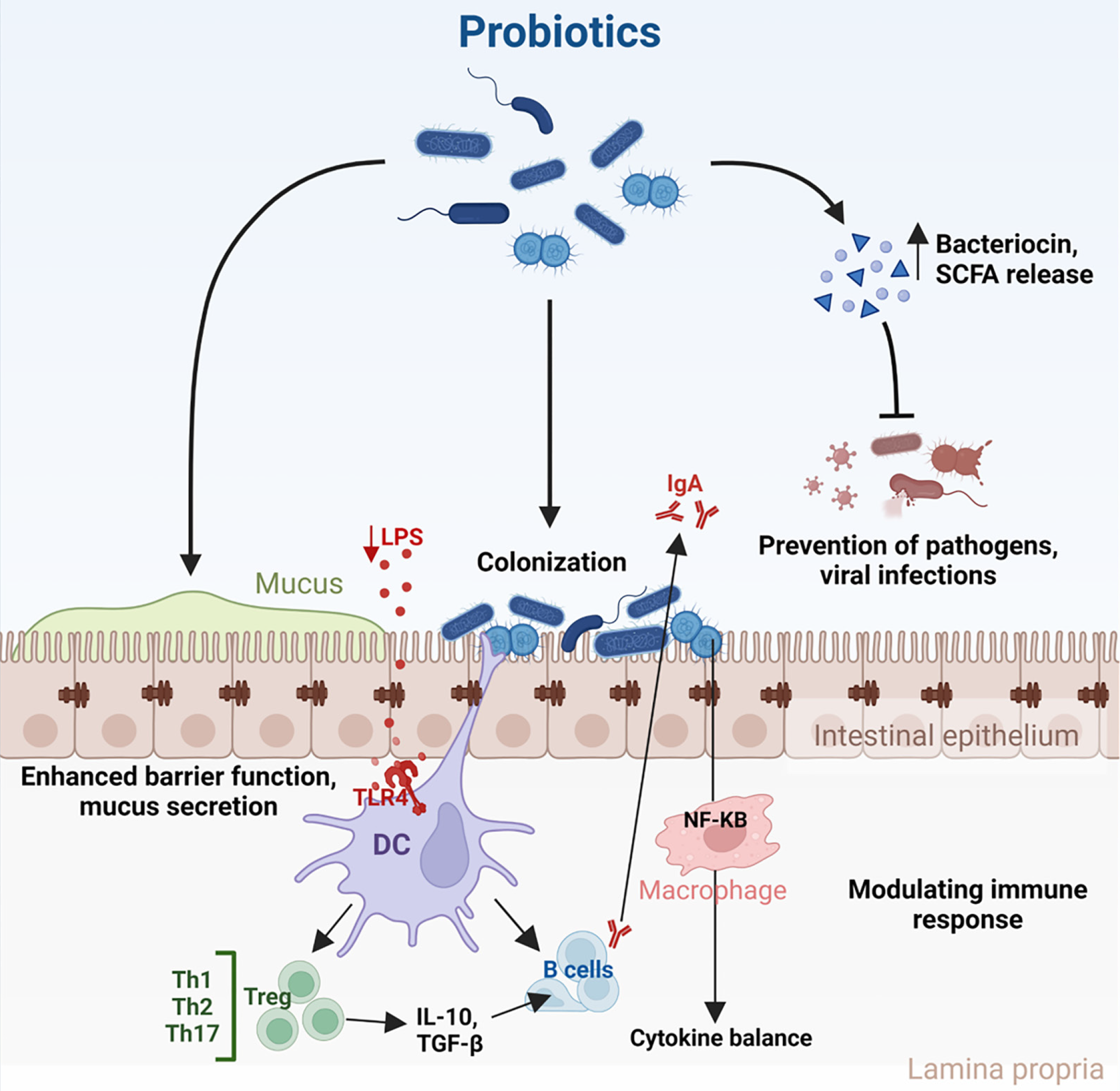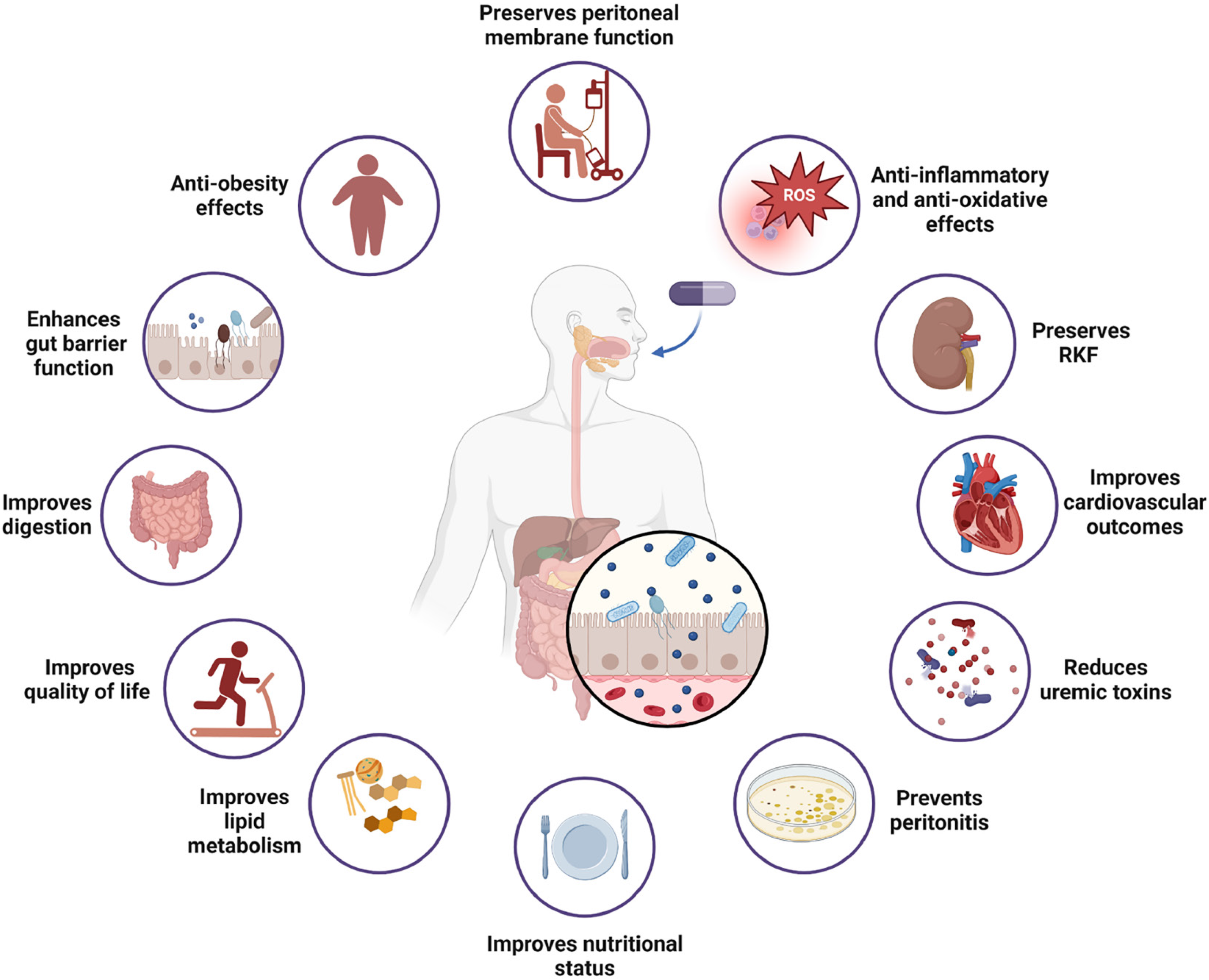Copyright
©The Author(s) 2024.
World J Nephrol. Dec 25, 2024; 13(4): 98719
Published online Dec 25, 2024. doi: 10.5527/wjn.v13.i4.98719
Published online Dec 25, 2024. doi: 10.5527/wjn.v13.i4.98719
Figure 1 Key mechanisms of probiotic activity.
Probiotics exert their effects through several mechanisms to promote gut health. (1) Modulation of gut microbiota: Probiotics colonize the gut epithelium and promote the growth of beneficial bacteria while inhibiting harmful pathogens through competitive exclusion and the production of short-chain fatty acids and antimicrobial substances (bacteriocin); (2) Enhancement of gut barrier function: Probiotics tighten tight junctions between intestinal epithelial cells and stimulate mucin production, reducing gut permeability and protecting against harmful substances; and (3) Immunomodulation: Probiotics interact with immune cells, particularly dendritic cells (DCs) and macrophages, through pattern recognition receptors, such as TLRs. This interaction leads to reduced lipopolysaccharide (LPS) production, inhibition of the nuclear factor-kappa B inflammatory pathway, decreased proinflammatory cytokine production, and enhanced secretion of anti-inflammatory cytokines. Probiotics also increase the levels of immunoglobulin (Ig) A-secreting plasma cells, promoting the secretion of secretory IgA into the gut lumen, which helps prevent bacterial invasion. SCFA: Short-chain fatty acid; DC: Dendritic cell; LPS: Lipopolysaccharide; NF-Κb: Nuclear factor-kappa B; IgA: Immunoglobulin A; IL-10: Interleukin-10; TGF-β: Transforming growth factor-β; Th: T helper cells; Treg: Tegulatory T cells. Created in BioRender.com (Supplementary material).
Figure 2 Potential probiotic benefits in peritoneal dialysis.
Created in BioRender.com (Supplementary material).
- Citation: Stepanova N. Probiotic interventions in peritoneal dialysis: A review of underlying mechanisms and therapeutic potentials. World J Nephrol 2024; 13(4): 98719
- URL: https://www.wjgnet.com/2220-6124/full/v13/i4/98719.htm
- DOI: https://dx.doi.org/10.5527/wjn.v13.i4.98719










